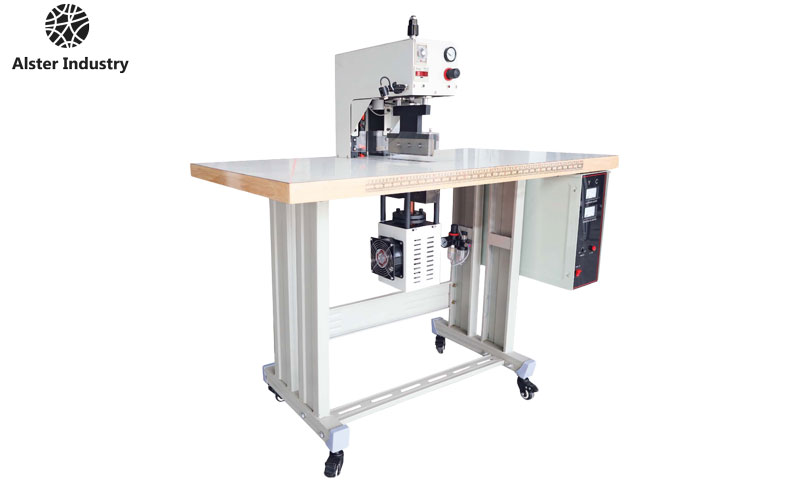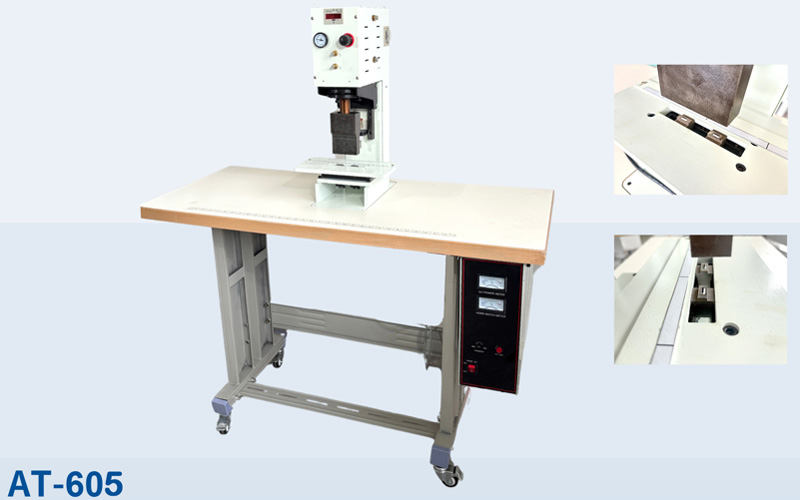Ultrasonic placket cutting machines are revolutionizing the garment industry, especially in the production of seamless polo shirts. These machines offer unmatched precision, speed, and efficiency by using high-frequency vibrations to cut and seal fabric edges simultaneously. However, the quality of the cut and the seamless finish depend heavily on the type of fabric used. Not all materials respond equally well to ultrasonic energy, making it critical for manufacturers to select the right fabric types to achieve optimal performance.
In this comprehensive guide, we’ll explore the types of fabrics best suited for ultrasonic placket cutting, focusing particularly on applications such as seamless polo shirt manufacturing. We’ll also cover the technology behind ultrasonic cutting, the physical and chemical properties that make fabrics compatible, and practical tips for choosing the best materials.

Understanding Ultrasonic Placket Cutting Technology
Ultrasonic cutting is a method that uses high-frequency sound waves—typically ranging from 20 kHz to 40 kHz—to generate localized heat through friction. This frictional heat melts thermoplastic fibers along a predefined path, allowing for a simultaneous cutting and sealing action.
Unlike traditional cutting methods that rely on physical blades, ultrasonic cutting is contactless. This offers several advantages:
No Fraying: The edges are melted and sealed, eliminating the risk of fraying.
Cleaner Finish: Produces a professional, smooth, and seamless edge, perfect for plackets on polo shirts.
Reduced Maintenance: Since there are no cutting blades that wear down, maintenance is minimal.
Precision and Repeatability: Ideal for high-volume garment production where consistency is crucial.
However, this technology is only effective on fabrics that melt or react predictably under ultrasonic energy. Therefore, understanding fabric compatibility is essential.
Key Fabric Properties for Ultrasonic Cutting
Not every fabric is suitable for ultrasonic cutting. To ensure efficiency and edge quality, the fabric should possess specific characteristics:
1. Thermoplastic Behavior
The most important requirement is the presence of thermoplastic fibers. These are synthetic polymers that soften when heated and harden upon cooling. During ultrasonic cutting, these fibers melt and fuse at the edges, creating a clean and sealed finish.
Common thermoplastic fibers include:
Polyester
Nylon
Polypropylene
Acetate
Triacetate
Natural fibers like cotton or linen do not melt—they burn or char—making them poor candidates for ultrasonic cutting unless blended with sufficient synthetic material.
2. Fiber Orientation and Weave Structure
Fabrics with a uniform weave or knit provide better stability during cutting. Tightly woven or knitted structures reduce distortion and edge fraying.
3. Even Thickness
Uneven fabric thickness can lead to inconsistent cutting, unsealed areas, or excess melting. Fabrics with consistent thickness allow for even ultrasonic energy distribution and predictable results.
4. Low Moisture Content
Moisture can interfere with ultrasonic vibrations, acting as a barrier that prevents heat from developing properly. Synthetic fabrics with low moisture absorption perform best.
5. Surface Smoothness
Smooth fabrics allow the ultrasonic horn (or sonotrode) to glide easily and apply even pressure, resulting in cleaner edges.
Best Fabric Types for Ultrasonic Placket Cutting
Now that we’ve identified the ideal characteristics, let’s explore the best fabric types compatible with ultrasonic placket cutting, especially in the context of seamless garment production.
1. Polyester (100% and Blends)
Polyester is the gold standard for ultrasonic cutting. It has a low melting point (around 260°C), consistent thermoplastic behavior, and excellent tensile strength. It melts uniformly under ultrasonic energy and seals cleanly without producing burnt edges.
In seamless polo shirt manufacturing, 100% polyester or polyester-rich blends (e.g., 80/20 or 65/35 polyester/cotton) are highly favored. These blends maintain comfort and breathability while still allowing for efficient ultrasonic processing.
Key Advantages:
Excellent edge sealing
Cost-effective
High strength and durability
Moisture-wicking and quick-drying
2. Nylon (Polyamide)
Nylon is another synthetic polymer that performs well under ultrasonic energy. It melts cleanly and produces smooth, sealed edges. It’s commonly used in activewear, outerwear, and performance apparel.
While not as prevalent in polo shirts as polyester, nylon can be used in hybrid fabrics or functional panels.
Key Advantages:
High flexibility and durability
Smooth melting behavior
Lightweight and breathable
3. Polypropylene
Polypropylene is a lightweight, water-resistant fabric that reacts well to ultrasonic energy. It’s widely used in nonwoven textiles (e.g., face masks, medical garments), but woven or knitted versions are also suitable for certain garment applications.
For placket cutting, polypropylene is less common but still usable, particularly in sport-focused or technical garments.
Key Advantages:
Excellent ultrasonic sealing
Very low moisture absorption
Lightweight and chemical-resistant
4. Acetate and Triacetate
These cellulose-based synthetic fibers have thermoplastic properties and respond favorably to ultrasonic cutting. While not commonly used in sports or casual garments, they are sometimes incorporated into fashion polo shirts or decorative elements.
Key Advantages:
Soft and luxurious feel
Clean melting with ultrasonic energy
Lightweight and drapable
5. Custom Thermoplastic Blends
Fabric manufacturers increasingly develop custom synthetic blends optimized for seamless construction and ultrasonic processing. These may include spandex for stretch, or advanced yarns for temperature regulation, but the base material remains polyester or another thermoplastic.
These engineered blends are ideal for brands developing high-performance or stylish seamless polos.
Fabrics to Avoid for Ultrasonic Cutting
Equally important is understanding which fabrics should be avoided when using ultrasonic placket cutting machines:
1. 100% Natural Fibers (Cotton, Linen, Wool)
Natural fibers burn rather than melt when exposed to ultrasonic energy. They can char, smoke, and create weak edges prone to fraying.
2. Rayon and Viscose
Though semi-synthetic, these fibers behave more like natural cellulose and are not thermoplastic. They scorch under ultrasonic energy rather than melt.
3. Loose or Textured Fabrics
Open weaves, pile fabrics (like terry or velvet), and heavily textured materials may result in uneven cutting and sealing. The ultrasonic horn may not apply uniform pressure, leading to inconsistent results.
Practical Tips for Fabric Selection in Seamless Polo Manufacturing
For manufacturers aiming to produce high-quality seamless polo shirts using ultrasonic placket cutting, consider the following:
1. Start with a Polyester Base
Choose a 100% polyester or a polyester-rich blend (minimum 65%) to ensure reliable edge sealing. The more thermoplastic content, the better the results.
2. Request Test Swatches from Fabric Suppliers
Before scaling production, test sample swatches on your ultrasonic machine. Evaluate the edge sealing, distortion, and cutting speed to determine compatibility.
3. Watch for Shrinkage and Curling
Some synthetic fabrics may shrink or curl at the cut edge under ultrasonic heat. Stabilizers or fabric treatments can help minimize this.
4. Align Fabric Grain Properly
Make sure the fabric is aligned along the correct grain when cutting to prevent puckering or distortion.
5. Use Calibrated Cutting Parameters
Ultrasonic machines allow adjustments in amplitude, speed, and pressure. Fine-tune these parameters based on the specific fabric for the best outcome.
Benefits of Using Compatible Fabrics for Ultrasonic Cutting
Selecting the right fabric doesn’t just improve the cut—it enhances the entire garment manufacturing process. Key benefits include:
Faster Production Speed: No need for post-processing like hemming or sewing cut edges.
Cleaner Appearance: Ideal for visible seams like plackets or necklines.
Better Durability: Sealed edges resist wear and tear over time.
Reduced Labor Costs: Automation and clean cutting reduce manual work.
Enhanced Brand Perception: Higher quality and finish improve customer satisfaction.
Real-World Applications: Ultrasonic Cutting in Polo Shirt Production
Seamless polo shirts have gained immense popularity for their comfort, sleek design, and modern aesthetic. Ultrasonic cutting allows for:
Seamless plackets that lay flat and look clean
Custom-fit cuffs and collars with fused edges
Quick customization with laser-guided ultrasonic patterns
Brands focusing on performance sportswear, business-casual polo shirts, and leisurewear often choose ultrasonic cutting to stand out in a competitive market.
Summary: Choosing the Best Fabrics for Ultrasonic Placket Cutting
| Fabric Type | Thermoplastic? | Ideal Use Case | Notes |
|---|---|---|---|
| Polyester (100%) | Yes | Polo shirts, activewear, casualwear | Best all-around performer for ultrasonic cutting |
| Polyester/Cotton Blends | Yes (partial) | Comfortable polo shirts, uniforms | Must contain enough polyester to allow melting |
| Nylon | Yes | Performance garments, linings | High strength, slightly more expensive than polyester |
| Polypropylene | Yes | Lightweight garments, technical textiles | Great sealing, but limited fashion flexibility |
| Acetate/Triacetate | Yes | Fashion polo shirts, decorative elements | Smooth cut but less durable |
| Cotton/Linen/Wool | No | Not recommended | Prone to fraying and poor ultrasonic response |
Final Thoughts
Ultrasonic placket cutting is a powerful tool in modern apparel manufacturing, offering unmatched precision and efficiency. However, the key to unlocking its full potential lies in selecting the right fabric.
Fabrics with high thermoplastic content, even structure, and stable moisture profiles perform best under ultrasonic energy. Polyester and polyester blends remain the most practical and versatile choice, especially for seamless polo shirts. Manufacturers can enhance their production output and garment quality by aligning fabric selection with the unique demands of ultrasonic cutting technology.
If you’re seeking high-quality thermoplastic fabrics or looking to streamline your seamless garment production line with reliable ultrasonic cutting performance, consider partnering with textile experts and suppliers who understand these requirements in depth.
For those manufacturing seamless polo shirts at scale, ultrasonic placket cutting—combined with the right fabric—offers a competitive edge in both efficiency and product appeal.
If you need further guidance on fabric sourcing or wish to explore advanced ultrasonic cutting solutions tailored to your production setup, feel free to ask Alster!

10. Summary Table: Common Issues Solved by Ultrasonic Buttonhole Punching
| Common Issue | How Ultrasonic Punching Solves It |
|---|---|
| Fraying of buttonhole edges | Edge sealing through localized melting |
| Inconsistent buttonhole shape | Precision through digital control |
| Burnt or discolored fabric | Non-thermal process eliminates scorching |
| Damage to stretch/seamless fabrics | Non-contact punching prevents tearing or deformation |
| Manual labor & low productivity | High-speed automation with minimal operator intervention |
| Stitch misalignment | Accurate integration with stitching machines |
Need More Info?
If you’re evaluating ultrasonic technology for your polo shirt line, we recommend starting with a trial run or consulting a supplier experienced in garment ultrasonic applications. If you’d like help identifying trusted machine suppliers or getting a custom solution, feel free to reach out.
